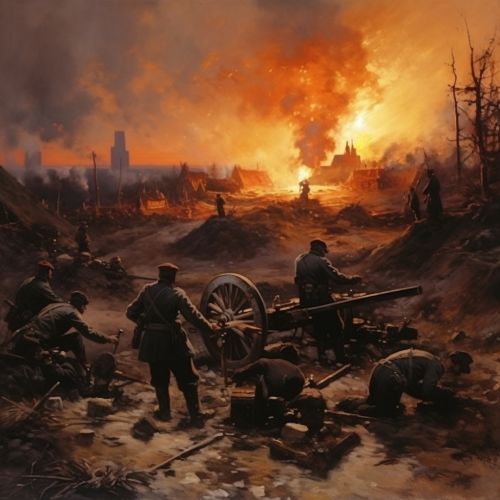Russian Civil War
Background
The Russian Civil War was a multi-party conflict that took place from 1917 to 1923, immediately following the Russian Revolution of 1917. It was primarily fought between the Bolshevik Red Army and the White Army, the loosely allied anti-Bolshevik forces. Many foreign armies warred against the Red Army, notably the Allied Forces and the pro-German armies. The Red Army eventually defeated the White Armed Forces of South Russia in Ukraine and the army led by Admiral Aleksandr Kolchak in Siberia in 1919.


Causes
The causes of the Russian Civil War were numerous and complex, rooted in centuries of social and political unrest. The immediate trigger was the abdication of Tsar Nicholas II in February 1917 and the subsequent power vacuum that resulted in the formation of the Provisional Government and the Petrograd Soviet. The Provisional Government's decision to continue fighting in World War I led to widespread dissatisfaction and the eventual seizure of power by the Bolsheviks in the October Revolution.
Major Parties
The Red Army
The Red Army, also known as the Workers' and Peasants' Red Army, was established by the Bolsheviks. It was led by Leon Trotsky, who built up the army from scratch. The Red Army was based on the principle of elected officers and did not use traditional military ranks; however, this was quickly changed after the start of the civil war.
The White Army
The White Army was a loose confederation of Anti-Bolshevik forces that formed the White Movement. These forces were led by former officers of the Imperial Russian Army and included monarchists, liberals, and socialists who opposed the Bolsheviks. The White Army was plagued by internal divisions and lack of coordination.
Foreign Intervention
Several foreign powers intervened in the Russian Civil War, supporting the anti-Bolshevik White Army. The reasons for intervention varied: some countries were motivated by opposition to the spread of communism, while others were interested in protecting their economic interests or territorial claims.
Major Battles and Campaigns
The Russian Civil War was marked by numerous battles and campaigns. Some of the most significant include the Battle of Tsaritsyn, the Southern Front, and the Eastern Front. The Red Army's eventual victory in these campaigns marked a turning point in the war.
Aftermath
The Russian Civil War resulted in a victory for the Red Army and the establishment of the Soviet Union. The war had devastating effects on the Russian economy and society, with millions of casualties and widespread famine. The war also marked the beginning of a period of political repression and totalitarian rule.
